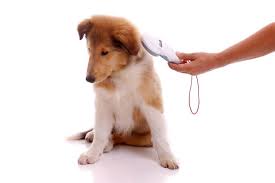How to Microchip Your Dog: 14 Steps

Microchipping your dog is an important and valuable way to ensure their safety. In the event that your pet gets lost or stolen, having a microchip can increase the chances of you being reunited quickly. This process is straightforward and relatively painless for your furry friend. Follow these 14 steps to successfully microchip your dog:
1.Research local regulations: First, understand the requirements and regulations in your area for microchipping pets.
2.Choose a reputable microchip brand: Select a reliable brand that is widely recognized and accepted by veterinarians and shelters.
3.Find a qualified professional: Contact your veterinarian or a local animal shelter to find someone experienced in microchipping dogs.
4.Schedule an appointment: Book an appointment for the microchipping procedure.
5.Prepare your dog: Ensure your pet is up-to-date with vaccinations and is in good health before undergoing the procedure.
6.Learn about the microchip insertion process: The microchip is a tiny, electronic device encased in a biocompatible glass vial and inserted under the skin using a hypodermic needle.
7.Bring identification: Take identification documents, such as proof of ownership and registration papers, when attending the appointment.
8.Arrive at the appointment: Arrive punctually to ensure ample time for paperwork and the procedure itself.
9.Complete paperwork: Fill out all necessary documents provided by the veterinarian or animal care professional.
10.Position your dog: The veterinarian will place your dog on their side or back, depending on its size, to access the area between their shoulder blades where the chip will be inserted.
11.Insert chip: The veterinary professional will insert the chip using a needle applicator, after cleaning and prepping the area with antiseptic solution.
12.Verify chip functionality: Using a handheld scanner, they will confirm that the chip is working properly and that your pet’s unique identification number is easily readable.
13.Registered your dog’s microchip: The professional will input your contact information and the microchip number into an appropriate database.
14.Maintain updated information: Regularly check and update your contact details in the database so that you can be reached in case your dog is lost or stolen.
By following these 14 steps, you can provide your dog with an extra layer of protection and improve their chances of a swift and safe return if they ever become lost or separated from you.






